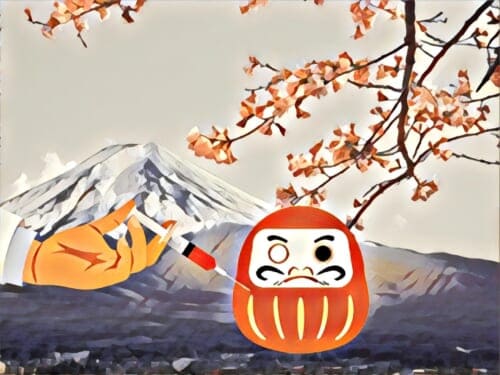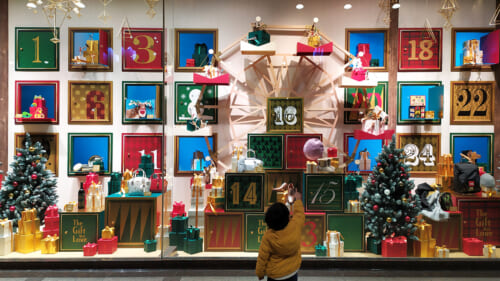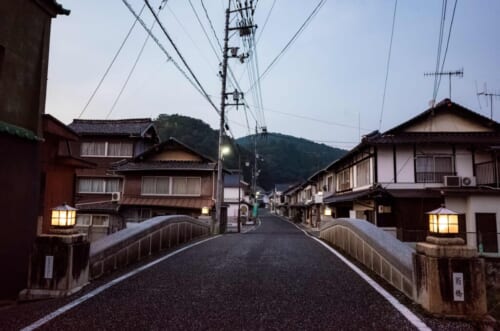Setsubun 節分 is a significant cultural event in Japan, celebrated annually on the day before spring officially begins. Rooted in centuries of tradition, Setsubun is celebrated with rituals designed to cleanse homes of evil spirits and invite good fortune for the year ahead. Among these rituals, the most iconic is mamemaki 豆まき, or bean throwing, which has become synonymous with the festival. Over time, Setsubun has evolved to include modern customs such as eating ehomaki 恵方巻き sushi rolls, blending ancient practices with contemporary influences.
Setsubun is more than just a festive event; it carries profound symbolic meaning. These rituals reflect themes of purification, renewal, and the welcoming of good fortune. By participating in these customs, individuals connect with Japan’s rich cultural heritage and prepare for the opportunities and challenges of the coming year.
The Origins of Setsubun
The word Setsubun translates to “seasonal division,” referring to the transition between winter and spring. Its origins lie in the Chinese lunar calendar, which was historically adopted in Japan. In ancient times, seasonal changes were believed to be periods of heightened spiritual activity, making households more vulnerable to misfortune and illness. To counter these threats, people practiced rituals aimed at expelling evil spirits and ensuring a smooth transition into the new season.
The custom of scattering beans during Setsubun can be traced back to ceremonies performed in the Imperial Palace. By the 15th century, this practice had spread to common households and evolved into the tradition of mamemaki. Today, Setsubun continues to be celebrated with a mix of historical reverence and modern adaptations.
Mamemaki: Driving Out Evil, Welcoming Good Luck
Mamemaki, the centerpiece of Setsubun, is both a spiritual ritual and a lively family event. Traditionally, the head of the household — often the father or eldest son — takes on the role of casting roasted soybeans, known as fukumame 福豆 or “good luck beans,” to purify the home. Starting from the center of the house, beans are thrown out of windows and doors while chanting “Oni wa soto! Fuku wa uchi!” (鬼は外! 福は内), meaning “Evil out! Luck in!” The ritual concludes at the entrance, symbolizing the complete expulsion of negative energy.
In modern households, the ritual has taken on a playful twist. A family member, often the father, dons an oni 鬼 mask to represent the demon being banished. Children enthusiastically throw beans at the “demon,” turning the event into a fun and memorable activity. This adaptation preserves the spirit of the tradition while making it engaging for younger generations.
Why Beans?
The choice of beans for mamemaki is steeped in symbolism. The Japanese word for beans, mame 豆, sounds similar to “ma-me” 鬼目(devil’s eye), and “ma-metsu” 鬼滅 (devil’s destruction). By throwing beans, participants symbolically strike the eyes of evil spirits, driving them away. Additionally, roasted beans are used because uncooked beans could potentially sprout, symbolizing bad luck taking root.
In some regions, alternatives such as peanuts are used, as they are easier to clean and less likely to attract pests. Despite regional variations, the core message of using beans to ward off evil remains consistent.
Important Practices for Mamemaki
For those interested in participating in mamemaki, a few key points should be observed:
- Eat the Beans for Luck: After scattering the beans, each family member eats the number of beans corresponding to their age, plus one extra for the coming year. This practice is believed to bring good health and fortune.
- Use Roasted Beans: Only roasted soybeans, or fukumame, should be used to prevent bad luck from “taking root.” These are readily available in supermarkets during the Setsubun season, often sold in special containers.
- Conduct the Ritual at Night: According to tradition, evil spirits are most active after sunset. The ritual should therefore be performed in the evening for maximum effect.
For a creative twist, some people prepare fukucha 福茶, or good luck tea, by steeping the roasted beans in hot water. Ingredients such as salted kelp or pickled plums can be added for additional flavor and auspicious symbolism.
Ehomaki: A Modern Addition to Setsubun
While mamemaki has ancient roots, the practice of eating ehomaki 恵方巻き sushi rolls is a relatively modern invention. Originating in 1930s Osaka, ehomaki—thick, uncut sushi rolls—was initially promoted by sushi and seaweed business associations as a way to celebrate Setsubun. The name ehomaki, meaning “lucky direction roll,” was popularized in the 1980s by a marketing campaign from the Seven-Eleven convenience store chain.
The custom involves eating the roll in silence while facing the year’s “lucky direction,” determined by the Chinese zodiac. The uncut roll symbolizes completeness and unity, and cutting it is thought to “cut” one’s luck. Each ehomaki typically contains seven ingredients, representing the Seven Lucky Gods 七福神, deities of good fortune in Japanese folklore.
Variations and Modern Innovations
Today, supermarkets and convenience stores nationwide heavily promote ehomaki in the weeks leading up to Setsubun. In addition to traditional sushi rolls, variations such as seafood-only rolls, vegetarian options, and regional specialties have emerged. Businesses have even expanded the concept to include Setsubun-themed roll cakes and burritos, ensuring that luck can be “consumed” in creative ways.
Interestingly, some stores now offer ehomaki during other seasons, such as spring, summer, and autumn, though these are less common. These adaptations highlight the blending of traditional practices with modern consumer trends.
Embracing Setsubun as a Visitor
For visitors to Japan, Setsubun offers a unique opportunity to experience the country’s traditions firsthand. Many shrines and temples host public mamemaki events, where participants can join in scattering beans and watching performances featuring oni masks. Some locations even provide special fukumame for attendees to take home.
Some of the most typical places to see the Setsubun celebration are Yasaka Shrine in Kyoto, where you can also see geisha throwing bean, Senso-ji in Asakusa or Naritasan Fudoson in Osaka, where the ones in charge of throwing beans are kabuki actors.
Additionally, trying ehomaki during Setsubun is a delicious way to engage with the holiday. Whether purchased from a local store or made at home, this tradition allows visitors to share in the spirit of Setsubun while enjoying a taste of Japanese culture.
Setsubun is a vibrant celebration that bridges Japan’s historical and modern practices. From the ancient ritual of mamemaki to the contemporary popularity of ehomaki, the festival embodies themes of renewal, luck, and togetherness. Whether you’re scattering beans, donning an oni mask, or savoring a sushi roll in silence, Setsubun invites participants to embrace the promise of spring and welcome prosperity for the year ahead. For locals and visitors alike, it’s a meaningful and joyous occasion that continues to captivate hearts across Japan.










No Comments yet!